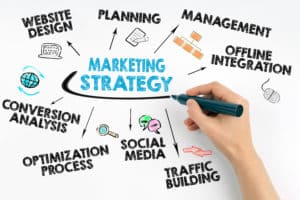When COVID-19 rapidly changed everything overnight, business owners worked around the clock to ensure their businesses didn’t falter. Lay-offs, Payment Protection Program loans, remote work, and — perhaps most importantly — a change to their message became vital to industries across the globe. It’s now 18 months later. If you’re still using the same marketing techniques from before and during the pandemic, then I hate to break it to you. You’re behind.

We are now living in a world that will be categorized as pre-COVID-19, during COVID-19, and post-COVID-19. If you’re not in the post-COVID-19 world, then you are failing to see the opportunities for growth and marketing. The truth is that after any major event — like 9/11, which is coming up on its 20th anniversary — the entire world changes. If business leaders and marketing campaigns don’t change with it, their messages will fall on deaf ears.
For many small-business owners, pivoting to a new marketing campaign is easier said than done. You don’t have the luxury of a large marketing team or interns to take care of the work for you. I want to help you cut through the noise and get back to the basics. You can develop a marketing plan that will see your company soar into 2022 and beyond.
Follow these 4 steps, and the post-pandemic world will be yours to conquer.
Step 1: Diversify Your Marketing

We all have one marketing platform that outperforms the others. I may be a print marketing guy, but many companies get plenty of customers from digital marketing. However, relying on one source is a bad idea. This leaves you vulnerable to potential issues down the road without other back-up plans in place.
Continue focusing on this valuable source, but start diversifying that content into other platforms. If you have great online videos, post snippets on Instagram’s reels. Use that content to create newsletter fodder or invite active leads to a workshop on that very topic using a postcard campaign. You don’t have to reinvent the wheel; you just have to use all the wheels.
Step 2: Collect Information
 When the whole world went into lockdown mode, businesses everywhere quickly learned they had a fatal flaw. Because they relied on seeing their customers every day, they were now stuck. They had no way to contact them! Besides a phone number or an email address, they had no other meaningful way to let their customers know they still existed.
When the whole world went into lockdown mode, businesses everywhere quickly learned they had a fatal flaw. Because they relied on seeing their customers every day, they were now stuck. They had no way to contact them! Besides a phone number or an email address, they had no other meaningful way to let their customers know they still existed.
It is more important than ever to collect contact information for your customers. Find a way to ask for phone numbers, email addresses, and mailing addresses. This ensures you can communicate with them through all touchpoints. If you want to diversify — especially into print marketing — this is vital. (And you’re going to want to. Forbes has it listed as one of the top growing trends among marketing campaigns today. Amazing how what’s always worked will continue to … well, always work!)
Step 3: Nurture Your Customers

There’s no denying it: People do business with people they like. And in today’s world, that idea has evolved. Today, people want to do business with companies that stand for something and inject meaning and value into everything they do. Your customers want to know that you empathize and support them and that the money they invest in your company has value.
When you nurture those relationships, you do a few things. For starters, you save money. It costs infinitely less money to serve a returning customer than it costs to acquire a new customer. Furthermore, that returning customer becomes a raving fan who will brag about you to their loved ones and strangers who read online reviews. That’s word of mouth in action — all because you took a stand for your current customers.
Step 4: Educate Your Consumers
 I’m willing to bet you have a product offering or service that is rarely used. Imagine if you could convert loyal customers into returning customers with one of these products? Maybe one of the parents in a family that comes regularly to your practice would like a discounted teeth whitening treatment. I think it’s going to be hard to say no to a discount and whiter teeth.
I’m willing to bet you have a product offering or service that is rarely used. Imagine if you could convert loyal customers into returning customers with one of these products? Maybe one of the parents in a family that comes regularly to your practice would like a discounted teeth whitening treatment. I think it’s going to be hard to say no to a discount and whiter teeth.
However, it’s difficult to get customers to use other products if they don’t know about them. Are you doing all you can to educate your customers about your current products? This goes back to Step 1. Diversify your message and your platform to create a larger reach and better educate your consumers on what you can do. This will help you generate more upsells and increase your retention.
The World Has Changed
 Have you changed with it? The major gimmicks and tricks coming out of major marketing campaigns are not going to work for everyone. And you shouldn’t try to make them work if it doesn’t make sense for your business. Instead, focus on the basics and adapt. Spread your message, support your current customers, and be authentic. It’s simple but effective.
Have you changed with it? The major gimmicks and tricks coming out of major marketing campaigns are not going to work for everyone. And you shouldn’t try to make them work if it doesn’t make sense for your business. Instead, focus on the basics and adapt. Spread your message, support your current customers, and be authentic. It’s simple but effective.
There’s a reason it’s called “the basics.”


Recent Comments